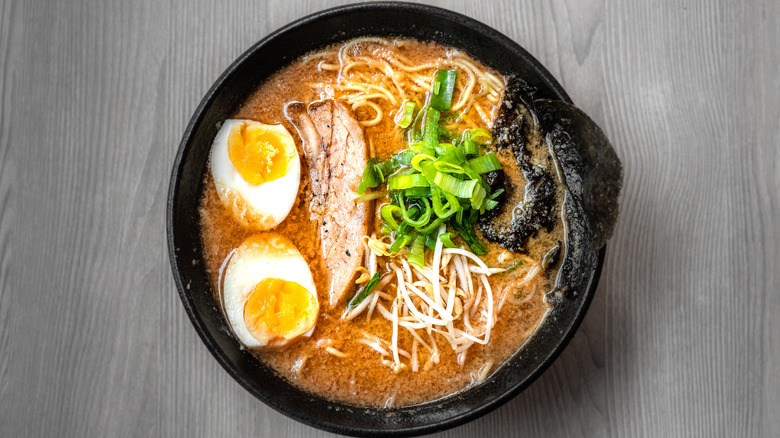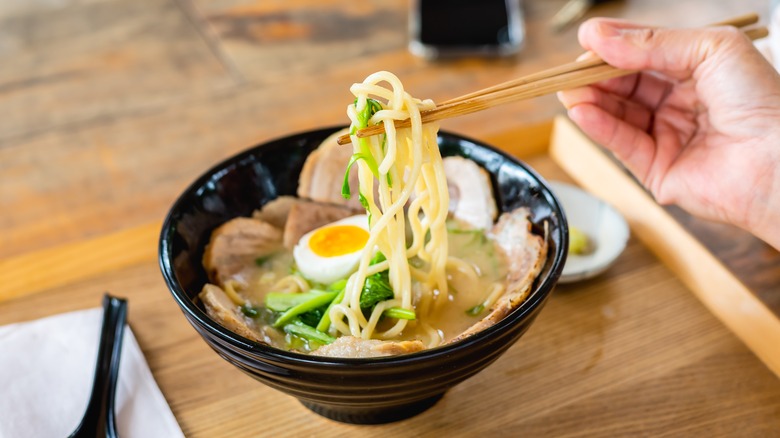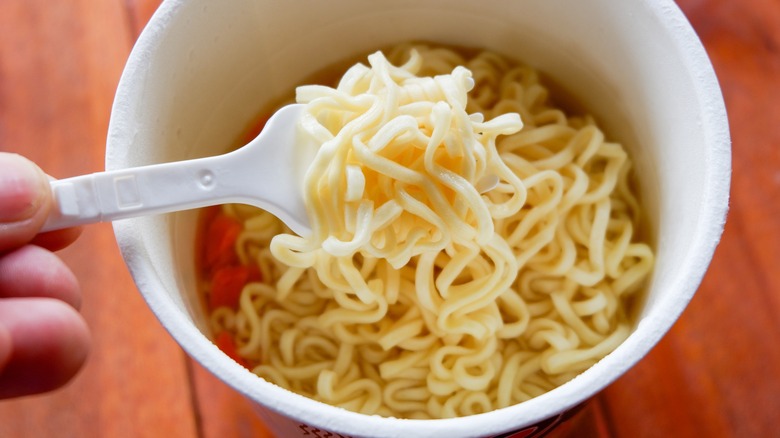You Can See And Taste The Difference Between American And Japanese Ramen
If you're craving a little more of an upscale ramen experience, you might head to a restaurant specializing in the Japanese dish. However, if you're in the United States, don't plan on your ramen actually being super authentic.
Though Japan invented the dish and it was brought to the States, many ramen restaurants have become pretty Americanized over the years. One major benefit of enjoying a bowl of ramen is the customizable ingredients that can be added to each dish. However, the ingredients used in each bowl are a major distinguishing factor between Japanese and American versions of the food — and that endless customization may be exactly what gives the ramen away as inauthentic.
In Japan, traditional ramen will focus more on quality rather than quantity. Many restaurants will develop their own specialized ramen dishes, rather than allowing customers to choose from a large list of ingredients to create their own. Some popular additions in Japan include marinated soft-boiled eggs, bamboo shoots, seaweed, and green onions. In more Americanized ramen recipes, however, the soup often contains toppings not traditionally found in the Japanese dish: carrots, chicken, mushrooms, and pork.
Even the dining experiences differ
In a YouTube video posted by Paolo de Guzman, he shared that he had lived in Japan for 15 years, and decided to compare the differences between Japanese and American ramen shops during a trip to America — he even called it a "ramen culture shock experience."
One major difference that de Guzman noted was the dining experience. In America, he observed groups of people sitting and eating together at tables. However, in Japan, eating ramen is a more solitary experience. Patrons typically eat their food quickly at a countertop, then leave — almost like enjoying a meal of fast food.
He also shared that ordering is different in both countries. In America, the ramen shop he visited operated like a restaurant — he was seated, a waitress took his order, the bowl of ramen was brought to his table, and he paid at the end. In Japan, he says, many ramen shops employ a ticketed ordering system. Patrons select what they want from a machine at the front of the shop, pay upfront, hand the tickets directly to a chef, then collect their own ramen.
Instant ramen is different in both countries, too
One thing that both countries can agree to love? Instant ramen. The food has long been a beloved and inexpensive go-to meal for many college students. Even in Japan, the single-portion packages of dehydrated noodles are a comfort food beloved by many. Cup Noodle brand is one that can be found easily in both countries. Even though this quick and cheap food is beloved across the globe, Japan takes things a little more seriously.
There are differences even between the cheaper products. American instant ramen is generally sold as a block of dried noodles, along with a seasoning packet that is added to the boiling water for some flavor. There are some more expensive brands, but many of these packets cost as little as 39 cents per serving at the grocery store.
In Japan, instant ramen may require a few extra steps. Though the dehydrated noodles are the same, Japanese brands will often feature a few different packets to mix in. These contain powder to flavor the broth, seasonings, and toppings — all packaged separately for maximum flavor. The overall quality may be a little better than the Americanized versions, too — some prominent restaurants will even produce their own instant ramen products.


